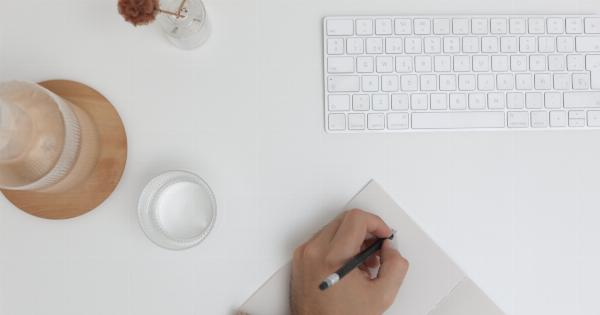Wearing a mask has become a necessity in our daily lives to protect ourselves and others from the spread of COVID-19. However, prolonged mask use can sometimes lead to eye discomfort, including dryness, irritation, and fogging of glasses.
If you find yourself experiencing these issues, don’t worry! There are several simple yet effective ways to relieve eye discomfort while wearing a mask. Read on to discover these helpful tips and tricks.
1. Choose the Right Mask
The type of mask you wear can greatly impact your eye comfort. Look for masks that have a snug fit around your nose, cheeks, and chin, as these are less likely to cause air leakage and fogging.
Masks with a metal nose bridge or adjustable straps also help in achieving a better fit.
2. Cleanse Your Face and Eyes
Prior to wearing a mask, cleanse your face using a gentle cleanser to remove any oils and debris that could potentially irritate your eyes.
Additionally, washing your eyelids and lashes with a gentle cleanser can help prevent dryness and relieve any existing irritation.
3. Use a Moisturizing Eye Drop
Combat dryness and irritation by using lubricating eye drops recommended by an eye care professional. These artificial tears can help keep your eyes moisturized and alleviate discomfort caused by mask-induced dryness.
4. Adjust Your Glasses
If you wear glasses and experience fogging, try adjusting your glasses slightly further down your nose, so they sit on top of your mask. This technique helps to redirect the breath away from your glasses and reduces fogging.
5. Apply Anti-Fog Solution
Another effective way to prevent fogging is by using an anti-fog solution specifically designed for glasses. Apply a small amount of the solution onto your lenses, and then wipe it off with a clean cloth.
This will create a transparent, anti-fog layer that prevents condensation.
6. Take Regular Mask Breaks
Constantly wearing a mask can strain your eyes. Whenever it is safe and appropriate, take short breaks from wearing your mask to allow your eyes to rest and recover. Step outside or find a well-ventilated area where you can remove your mask momentarily.
7. Practice the 20-20-20 Rule
Staring at screens for long periods can also contribute to eye discomfort. Remember to follow the 20-20-20 rule: every 20 minutes, take a 20-second break, and look at something 20 feet away. This practice helps relax the eye muscles and reduce strain.
8. Use a Mask Bracket
A mask bracket is a frame that sits inside your mask and creates a space between your face and the fabric. This additional space allows for easier breathing and reduces the chance of your mask touching and irritating your eyes.
9. Adjust Your Mask Straps
If your mask is too tight, it may cause unnecessary pressure on your face, leading to discomfort and eye irritation. Loosen the ear loops or ties slightly to relieve the pressure without compromising the mask’s effectiveness.
10. Seek Professional Advice
If your eye discomfort persists or worsens, it is essential to seek professional advice.
An eye care specialist can evaluate your symptoms, provide specific recommendations, and address any underlying eye conditions that may be exacerbating your discomfort.
In Conclusion
Wearing a mask is crucial for our safety, but it doesn’t have to come at the expense of eye discomfort.
By choosing the right mask, cleansing your face and eyes, using eye drops, adjusting your glasses, applying anti-fog solutions, taking regular breaks, practicing the 20-20-20 rule, using a mask bracket, adjusting your mask straps, and seeking professional advice when needed, you can easily relieve eye discomfort while wearing a mask.




























